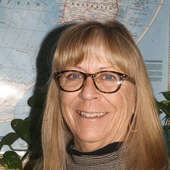- Research tips and McCook Brick Company- solid as a brick (12/16/24)
- Big Give appreciation and some railroad characters (11/15/24)
- George Randel becomes a landowner, gets married, and takes in a Buffalo Bill show (9/20/24)
- The memoirs of George F. Randel, early settler of Red Willow County (9/12/24)
- Vietnam War Memorial honors Nebraskans who served (6/13/24)
- McCook business promotions - just prior to 1893 stock market crash (5/30/24)
- Shall we dance? Meet you at the Gayway (12/8/23)
Brazil immigrants in Red Willow County
Friday, August 30, 2019
Let me begin by saying I have never been a fan of beets. Consequently, my family, including my husband who loves beets, has seen them only on buffets or other peopleís tables. It is very strange that I did not learn to like beets, I am a veggie lover from way back having a mother who introduced me to things like artichokes and asparagus and a father who grew the best kohlrabi around.
Strangely, I donít even remember ever tasting them other than the nasty things that come out of cans used only when I make pickled eggs. This year however, I promised pickled beets, and true to my word I purchased a large bag of fresh beets from Klooze Farms and googled a recipe. Preparing them involved simmering until tender a pot full. Low and behold, as I cleaned and prepped the cooked beets for the jars, I decided to pop one of the morsels in my mouth. What a surprise! That fresh beet tasted wonderful with nothing else on it! Sans butter, salt or pepper, I ate a whole bowl full. Beets have gained a new fan.
Several years ago, I wrote a piece about the 1920 Red Willow County Federal Census which included a short explanation as to why there were people listed who had been born in Brazil. Usually it was just one member of a family, the balance of which had either been born in Russia, Germany or the United States.
It seems that Brazil was offering land for homesteading and some of our Germans from Russia families went there first. When I went back to the census and looked at the entire state of Nebraska there were many who had settled with their Brazilian born children in the eastern part of the state, but two families who were living in Indianola Precinct caught my eye: Harch and Roedel.
So, letís look at Anna Harch (AKA Harsch) in the 1920 Census. She was 37 years old and married to Jacob A. Harch. Their children included Rufus 16, Lila 15, Lester H. 9, and Vernice 2 years, 8 months old. Anna was born in Brazil, immigrated to the U.S. in 1884, but when it asks what nationality she is, she replied, American. That is because she went through the Naturalization process which was done when her father filed to be naturalized. She was only around a year old when they left Brazil and in the 1800ís both children and wives were naturalized through their father/husbandís application. There are a lot of years between the oldest two children and the last two, approximately 6 years each and my assumption is that there may well be children buried that were born between those years.
Guss A. Roedel was a bit of a different matter. He too was born in Brazil, but he was a young man when he came to the U.S. in 1882, entering his twenties. Born in 1862, when the 1920 census was taken, he was 58 years old, owned his own home and listed his ethnicity as American because he had as an adult, went through the Naturalization process in the 1890ís.
He was married to Mary (Barthel) Roedel who was 8 years younger than he. Their children still in the home included Emil, Laura, John, Marea, Enoch, Edna and Elmer, the oldest of which was 25. His wife was born in Canada.
Two different stories seeking the same ending, becoming an American and forging a life for their families in the United States. Both were educated, both families were well incorporated into their new homes by the time the 1920 Federal Census was taken and both families have created a history for themselves in Red Willow County. Neither were afraid to list their countries of birth because they had gone through the Naturalization process.
So much information is available in Census records from the past and many websites carry available U.S. Census for research. It is fun to find the origins of your family through those records. Research assistants are available at the SWNGS library on Tuesday and Thursday from 1-4 to help you find your past. Located at 110 West C, Suite M-3, there is an elevator available for public use.

